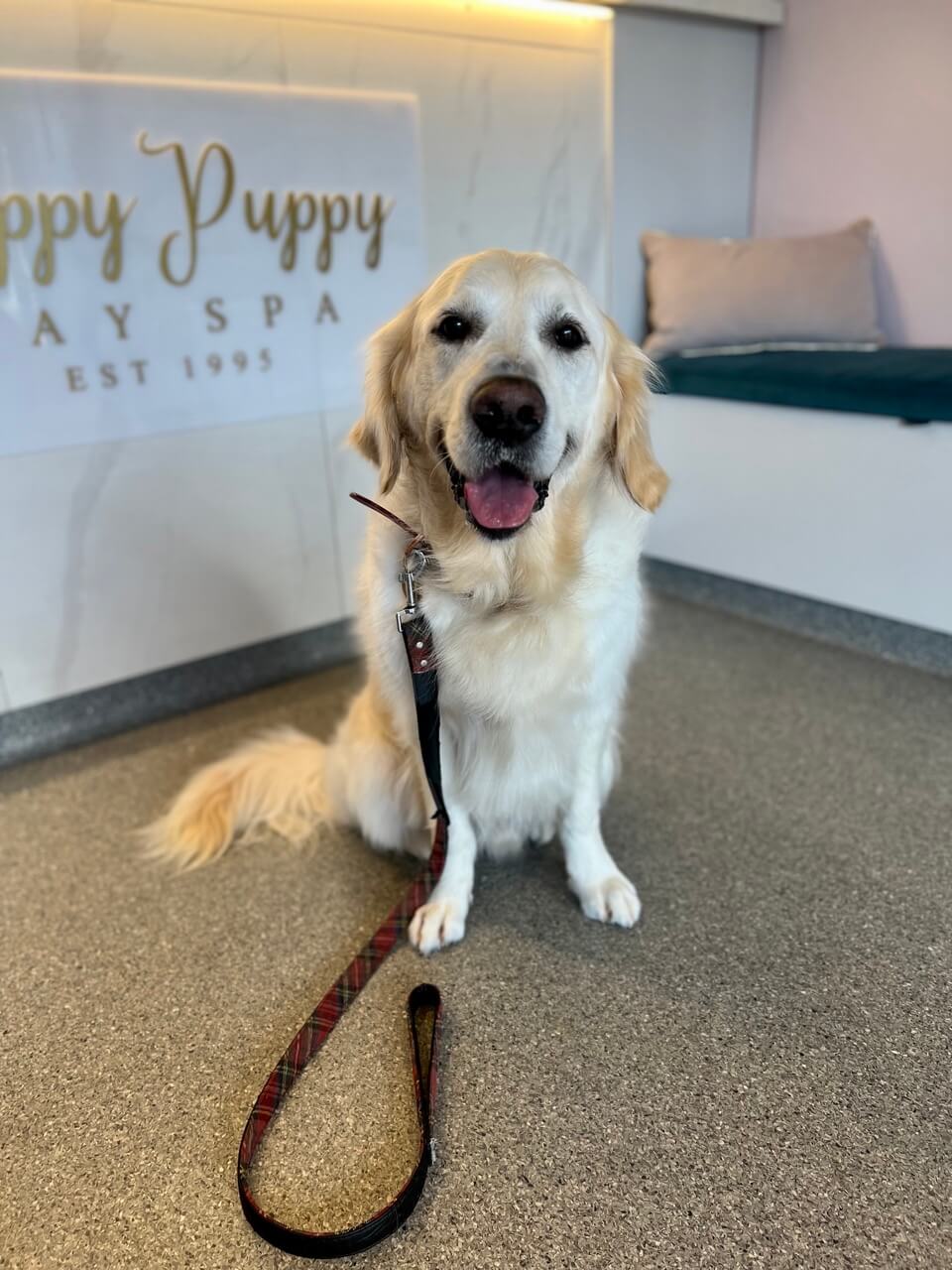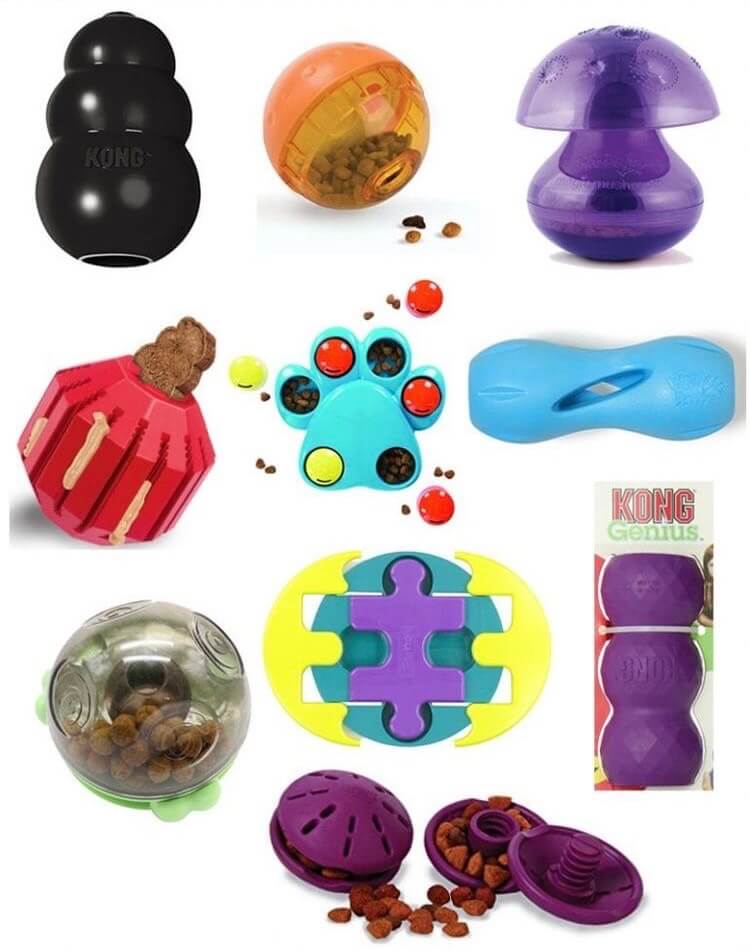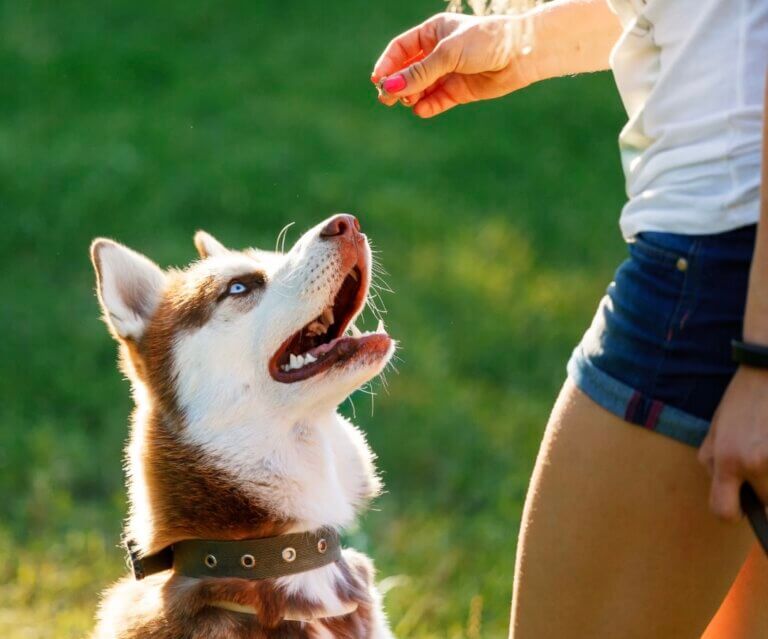Help! I have a fussy dog!
Whether you are a first-time dog owner, or a seasoned pet parent, dealing with a fussy dog can be a challenge. It can be emotionally, mentally and financially exhausting as you wrack your brains and try every trick in the book to get your picky pup to eat.
I know because I’ve been there.
Goose is my 4-year-old Golden Retriever who, up until two years ago, was to date, one of the worst dogs I have ever come across in terms of pickiness and fussy tendencies. This dog had me well and truly stumped. I would lose sleep as I trawled the internet tirelessly to find out exactly how to fix this problem. I spent hundreds of dollars on vet checks, and fancy bowls, and went through more brands of food than I’d like to recall in order to cure him of his fussiness.
Fast forward to today, where Goose’s eyes light up as he eagerly trots towards the kitchen at the sound of the word ‘Dinner?’ It is truly hard to believe that he ever turned his nose up at food.
Here are all the best tips and tricks I found which helped Goose and many other fussy dogs throughout my career in the dog industry.
Rule out medical issues
Just like humans, when we are feeling unwell, we often lose out appetite. This can also be one of the first signs that your dog may not be feeling their best either. If they have had a sudden change in their appetite, then scheduling an appointment with their vet would be the first port of call to rule out any medical issues, particularly if this change in appetite is accompanied by other symptoms such as a change in behaviour, loose stools, vomiting or reluctance to drink fluids.
If your dog is itchy, suffers from excessive gas, vomits after eating, or has loose stools, this can also be a sign that allergies or food sensitivities may be present, which can lead to food aversion. Again, it is best to get this checked out by their vet if you have any concerns to ensure they are in tip-top health!
Stop leaving food out all day
Whether you feed your dog once, or twice (or maybe three times a day if you have a puppy), we often fit their meal times into our daily routine. This could be throwing their food into a bowl and popping it down in the 5 minutes spare you have between getting yourself ready for work and the kids for school. Perhaps between zoom meetings, before after-school activities, or as you are hurrying to get to your own dinner!
If you have a picky dog, it can become tiring to wait for them to finish their bowl until you can go ahead and get on with your own tasks. Therefore many of us will resort to leaving our dog’s food out all day for them to ‘graze on’. Not only does this give our dogs the impression that food is always available, so why would they need to finish their meals in a timely manner but it can also lead to other issues too, such as:
– If you have a 2-dog household who have different feeding requirements. Leaving food down all day can be a challenge to ensure they are each eating their own food and not dipping into each others bowls as they choose. This is particularly important to consider if one (or both) of the dogs have medication within their food.
– Using food in training can become a challenge. We then find that when we take our dogs out to train and ask them to work for it, they will turn their noses up because why should they when they have unlimited access to it all day long at home?
Instead, create windows of opportunity for them to eat. Try leaving their bowl down for 10-15 minutes, and then any food which is left uneaten gets picked up, popped in the fridge, and then offered again at their next mealtime. Better yet, pop their food into a treat pouch and practice their obedience or that new trick you’ve been trying to get down pat. Keep reading, as there will be more on this later in the blog!
I created a monster!!!
When my dog Goose was a puppy, he began turning his nose up at his kibble. Being a first-time dog owner, my first thought was, ‘maybe he’s bored of it, and I bet if I add in just a sprinkle of cheese on top, he will love it again!’ Of course, he did and he gobbled down that bowl of food like he had never eaten before! Although this worked for a while, he soon became bored of the cheese, so I added some water instead, which turned the biscuits into gravy. Clean bowl once again! … Until two weeks later and he decided he wasn’t having any of it anymore and looked up at me with those big brown eyes which almost seemed to say, ‘ What else have you got?’ So I added in some roast chicken… Anyway, anyone who has a fussy dog will know where this story is headed!
It got to the point where my dog would turn his nose up at cheese, chicken, steak, sardines and everything else I could think to try. It got to the point that I had simply run out of ideas, and we were rotating toppers every day in a desperate attempt to get him to eat. We had already followed step 1 of taking him to the vet, where all his tests came back clear. Yep, he had me wrapped around his cute, little fluffy paw.
The moral of the story is that although I was trying to do my best for my puppy and I felt guilty about him not eating. Rather than fixing the issue, I had let my emotions get in the way, and fed into this fussy behaviour by adding in far too many toppers and creating a mentality in my dog that I would always offer him something better, so he should wait it out until I do.

Look at the food you are feeding
What we choose to feed to our dog can play more of a part in their behaviour and well-being than we think. If we look at the ingredients on the back of many supermarket kibble brands, usually what we find is that the percentage of quality ingredients is very low and that the food is predominantly made up of fillers and additives used to prolong the shelf life and allow the food to be produced for very little cost.
Switching to a high-quality, fresh food diet can be an absolute game changer when it comes to fussy dogs.
There are many commercial options available in pet food stores such as Pet Barn, including Big Dog and Dr B’s BARF, as well as options for a more DIY approach to fresh food feeding. It is incredibly important to ensure that you are feeding a nutritionally balanced and complete diet that contains the right nutrients for your dog to thrive.
Not only is fresh food fantastic for fussy dogs, but the health benefits which can be experienced are endless. Just some of the benefits include:
– A strengthened immune system
-Improvements in skin and coat health
-Reduced stool volume and odour
– The ability to choose single protein diets for dogs with food allergies or sensitivities
– Improved dental health
If you are interested in learning more about fresh feeding and its benefits, there are many great resources online that can be of great use. Of course, checking in and discussing dietary changes with your dog’s vet or, better yet, a canine nutritionist before adjusting your dog’s food is advised.
Make meal times fun!
Many dogs enjoy the process of working for their meals as opposed to simply being offered them straight from a bowl. This helps to use their brain and creates a challenge for them to work through in order to earn their food. There are many options available in pet stores, such as puzzle toys, snuffle mats, and food dispensing toys.
However, there are also some fantastic DIY options which are simple and easy ways to add some interest to your dog’s meal times. Such as:
– DIY snuffle mat: Simply take your dog’s kibble (or air-dried raw/prime 100) and scatter it into the grass. This taps into your dog’s natural desire to hunt and engages their sense of smell to encourage them to sniff out their food.
– Tea towel roll-ups: Grab yourself a tea towel or similar, and sprinkle food inside. Then roll up the ends, layering the food as you go. Your dog then has to use its nose to push the rolled-up towel revealing the food in each layer. To add a level of difficulty, you can then tie up the ends of the towel once your dog gets the hang of the exercise.
-Muffin tray topple: Go ahead and take a muffin tray and pop pieces of food in each hole. Then, cover each hole with a tennis ball and watch as your pup has to figure out how to access the food underneath by pushing off or picking up the balls.
-Food chasing games: Toss out a piece of food and encourage your dog to chase it by saying, ‘Get it!’ As they eat the food and begin to turn towards you, throw another piece in the opposite direction giving them the cue once again to ‘Get it!’ By adding movement into the way you deliver food, we tap into our dog’s prey drive and make the food itself much more interesting.
Ditch the dog bowl
As mentioned earlier in the blog, giving your dog windows of opportunity to eat their meals can be a great motivator to encourage dogs to eat what is offered. Otherwise, if they decide they are not interested, they will miss out until the next available window.
Measure out your dog’s daily food allowance, and pop this into a treat pouch to be used in short training sessions throughout the day. Aim for roughly 10-20 minute sessions (or whatever you can manage if you are time-poor) and begin rewarding whenever your dog does something you like.
Whether you are working on loose leash walking, mat training, or teaching them a cool trick to show off to your friends, using their daily allowance is a great way to increase food drive and encourage them to work for what is on offer.
If your dog doesn’t want to eat at that time, simply pop the food in the fridge and try again in another training session.
Is your dog hungry?
It is not uncommon that we are actually overfeeding our dogs without even realising it. This can be due to conflicting information found on the back of dog food packs, Facebook groups and also from various industry experts. Therefore it is important to take into consideration your dog’s body condition and if they are a healthy size for their age and breed.
Another important factor to consider is your dog’s energy levels, lifestyle, and individual circumstances. For example, if your dog enjoys a particularly calm and quiet lifestyle, and spends most of their days chilling out on the couch, then their total calorie intake required to maintain a healthy body condition is likely to be less than a high-energy, working dog.
Perhaps your dog is recovering from an operation or injury, resulting in reduced exercise needs and crate rest. This would also be a time to assess whether they need to continue with the same amount of food they were consuming previously to their injury.
Sneaky treats and human table scraps are also a surefire way to add in excess calories and create a fussy dog. Removing these from your dog’s diet and feeding only their daily food allowance is recommended when dealing with picky eaters. I find that keeping track of everything your dog is eating via a food journal is a great way to keep on top of this.
In conclusion, dealing with a fussy dog can be a challenging and frustrating experience. However, with consistency and patience, there is certainly a light at the end of the tunnel.
Let us know down in the comments if you try out any of these tips and tricks to help your fussy fido develop into a happy and healthy eater.

